The Geer Family
Readers should feel free to use information from the website, however credit must be given to the Willamette Heritage Center and to the author of the individual articles.
By Danielle Strom
“…A man 14 years older than myself, though young enough for me. He is the father of 10 children.…He is a Yankee in every sense of the word.…I did not marry rich, but my husband is very industrious, and is as kind to me as I can ask….He is a stout, healthy man for one of his age.”
[1]
These words, written by the second Mrs. Joseph Geer, Elizabeth Dixon Smith Geer, in a letter to a friend sum up the opinion of many who knew Joseph Cary Geer. In memoirs, diaries, and the addresses left behind by his family, this Oregon Pioneer is memorialized as a great man who helped to shape Marion County and the Oregon Territory.
Born on February 5, 1795 in Chaplin, Windham County, Connecticut,[2] Joseph Cary Geer seems to have been infected with a wandering spirit. After serving the artillery company raised by Captain Hibbard in the War of 1812, Joseph started working on local farms during the summers and taught school in the winters. He married for the first time on June 1, 1815 to Mary Johnson.[3] Three years later, they moved to the “Far West”[4] with their two young children. They lived on the Darby Plains in Central Ohio from 1818 until 1824.[5] During this time, he continued his work as a farmer and as a teacher.[6] In 1824, they moved to Madison County, Ohio where they welcomed another eight children into their family.[7] In 1840, they once again uprooted their family and moved, this time to Knox County, Illinois. Here they stayed until 1847.[8]
In 1845-1846, two of Joseph Geer’s sons, Joseph Cary Geer Jr. (1825-1908)[9] and Fred Walcott Geer (1817-1866),[10] and family, moved to Oregon.[11] In June of 1847, the rest of Joseph Geer’s family joined a wagon train bound for the Willamette Valley.[12]
The Geer family left many records of their trip across the plains. One of the more interesting is the account left by Calvin Geer, the son of Ralph Geer and grandson of Joseph Geer, Sr. In a letter written 77 years after the trip to Oregon, he comments on many parts of the Oregon Trail. For instance, “…but we had buffalo meat for breakfast, and wasn’t it good!”[13] and “They [Indians] had lots of dried salmon and would come up to us and say ‘me one shirt, you two salmon swap.’ And cross their hands.”[14] He wrote that his mother wanted some greens near Ash Holler, but could not find any, so she planted some mustard seeds. Years later, others who crossed the plains told the Geer family that they found and used mustard greens at Ash Holler.[15] He also wrote about meeting Marcus Whitman who told the pioneers what to expect as they crossed the Cascade Mountains.[16] When his family arrived at his uncle’s cabin near Drift Creek, in the Waldo Hills, Calvin’s mother noted that, “It was as fine a landscape as the eye could wish to see.”[17] To her last days, “she never gave up that the Waldo Hills was one of the finest places on God’s green footstool.”[18]
Surprisingly, all ten of Joseph and Mary’s children made it to the Pacific Coast and established homes here; however, Mary was ill with palsy before leaving the Midwest and all through the journey. Six weeks after arriving in Oregon, on December 6, 1847, Joseph Cary Geer buried his first wife.[19]
Joseph Geer married again 18 months after Mary’s death.[20] Elizabeth Dixon Smith, quoted above, was a widow whose husband died shortly after they arrived in Oregon. Joseph and Elizabeth had 3 children[21], bringing the count of Joseph’s offspring to 13. Elizabeth Geer died in 1855[22] and Joseph married for the third time in 1856 to Mrs. Mary Strong,[23] but they had no children.
Like all who crossed the plains, Joseph Geer and his family brought more than just themselves and their belongings, they brought their expertise and experience. Joseph and his sons worked on a dairy farm and on apple farms before coming to Oregon.[24] When he brought his family west, he brought cattle and apple seeds with him. Likewise, several of his sons planted nurseries.[25] Joseph Geer’s oldest son, Ralph, mentioned above, planted apple seeds and pear seeds on the second Donation Land Claim registered in Oregon, which is located in the Waldo Hills. Along with John Llewelling, Ralph Geer is noted for having established the fruit industry in Oregon.[26] Within five years of planting, Ralph Geer’s Fruit Farm produced 42 varieties of apple, 15 varieties of pear, 6 varieties of cherry, and 5 varieties of peach.[27] Ralph’s brothers, Heman Johnson Geer, also set up a successful nursery[28] and Frederick Walcott Geer was one of the first successful hop farmers in Oregon.[29]
Like his father before him, Ralph Geer was a teacher. He taught at the first school established in Marion County, in the Waldo Hills.[30] But unlike his father, who had little interest in politics, Ralph Geer became a member of the legislative assembly of the Oregon Territory in 1854 and was appointed to the State House Board which was charged with building a State House in Salem.[31] He also served on the Commission for the Southern Pacific Railroad[32] as well as helped to organize the first Marion County Fair in 1854[33]. Ralph and his wife, had thirteen exhibits at the first Marion County fair.[34] When he died in 1895, Ralph also had the distinction of being the last head of families who crossed the plains in 1847 under General Palmer.[35]
Joseph’s eight remaining children came to Oregon with his wagon train.[36] Many of his children also brought their children. The Geer family’s involvement in agriculture and local politics was significant in the formation of Marion County.[37]
Four of Ralph Geer’s children crossed the plains with him: Calvin (1837-1930),[38] Florinda (1839-1870),[39] Samantha (1842-1929),[40] and Le Grand Byington “By” (1845-1909).[41] Calvin, as mentioned above, left a humorous account of his travels across the plains to Oregon.[42] Whereas, Florinda and Samantha Geer acted as the “Paul Revere” of the era, bringing news of Civil War battles to Marion County residents. Whenever new information was brought to Salem, cannon would be fired and the girls would ride to town, get the news, and then announce it around the country side.[43] Florinda married Timothy Davenport, who became a representative in the State Legislature who left his own mark on Oregon.[44] By was a sheepman and cattleman. He specialized in breeding Spanish Merino sheep and was a State Land Agent.[45]
By all accounts, Joseph Cary Geer, “…governed himself by the Golden Rule…was a great wrestler in his younger days, a great worker, and benevolent to a fault…full of fun and anecdotes.”[46] Upon his death on 28 August 1881, he left behind 165 children, grandchildren, great-grandchildren and great-great-grandchildren, along with their wives, husbands, living on the Pacific Coast.[47]
The descendants of the Geer family impacted Oregon long after the first generations were deceased. Theodore Geer was elected Governor of Oregon in 1898 and was the first native born governor. He helped pass the first law controlling the employment of women in factories and laundries to ten-hour workdays and was governor when the Oregon System of citizen-initiated legislation was implemented. Joseph Geer’s grandson, Archie Geer, was the only steam boat captain in Oregon history to take a boat over the Cascade Falls at Celilo.[48] Ralph Geer’s Fruit Farm, now called GeerCrest, is still an active farm.[49] The original farm house is still in use by direct descendants and there are trees planted by Ralph Geer which are still being harvested. World renowned cartoonist, Homer Davenport is also a direct descendant of Joseph Cary Geer.[50]
[1] Oregon Pioneer Association Transactions for the 35th Annual Reunion of the Oregon Pioneer Association, (Oregon: Chausse_prudhomme Co., Commercial Printers, 1908), 177-178.
[2] Virginia Eastlick, The Oregon Geers (United States: 1986), 7.
[3] Ibid.
[4] Walter Geer, The Geer Genealogy; A Historical Record of George and Thomas Geer and their Descendants in the United States from 1623 to 1923 (New York: Brentano’s, 1923), 125.
[5] Ibid.
[6] Virginia Eastlick, The Oregon Geers (United States: 1986), 7.
[7] Walter Geer, The Geer Genealogy; A Historical Record of George and Thomas Geer and their Descendants in the United States from 1623 to 1923 (New York: Brentano’s, 1923), 125.
[8] Virginia Eastlick, The Oregon Geers (United States: 1986), 7.
[9] Walter Geer, The Geer Genealogy; A Historical Record of George and Thomas Geer and their Descendants in the United States from 1623 to 1923 (New York: Brentano’s, 1923), 127.
[10] Ibid.
[11] Virginia Eastlick, The Oregon Geers (United States: 1986), 7.
[12] Harvey Whitefield Scott, History of the Oregon Country, Volume III (Cambridge: Printed by the Riverside Press, 1924), 208.
[13] Calvin Geer, My Trip to Oregon as I Remember it (1925), 3.
[14] Ibid, 4.
[15] Ibid, 2.
[16] Ibid, 5.
[17] Ibid, 7.
[18] Ibid.
[19] Walter Geer, The Geer Genealogy; A Historical Record of George and Thomas Geer and their Descendants in the United Sates from 1623 to 1923 (New York: Brentano’s, 1923), 125.
[20] Virginia Eastlick, The Oregon Geers (United States: 1986), 7.
[21] Ibid.
[22] Ibid.
[23] Ibid.
[24] Ibid.
[25] Ibid.
[26] Harvey Whitefield Scott, History of the Oregon Country, Volume III (Cambridge: Printed by the Riverside Press, 1924), 343 and 346.
[27] Virginia Eastlick, The Oregon Geers (United States: 1986), 9.
[28] Ibid.
[29] Ibid.
[30] Ibid.
[31] George H. Williams, “Political History of Oregon from 1853-1865,” Oregon Historical Society Quarterly 2, No. 1 (March 1901): 7.
[32] Virginia Eastlick, The Oregon Geers (United States: 1986), 9.
[33] George H. Himes, “History of Organization of Oregon State Agricultural Society,” Oregon Historical Society Quarterly 8, No. 4 (December 1907): 319-320.
[34] Virginia Eastlick, The Oregon Geers (United States: 1986), 9.
[35] Ibid.
[36] Calvin Geer, My Trip to Oregon as I Remember it (1925).
[37] Virginia Eastlick, The Oregon Geers (United States: 1986), 64.
[38] Walter Geer, The Geer Genealogy; A Historical Record of George and Thomas Geer and their Descendants in the United States from 1623 to 1923 (New York: Brentano’s, 1923), 125.
[39] Ibid.
[40] Ibid.
[41] Ibid.
[42] Calvin Geer, My Trip to Oregon as I Remember it (1925).
[43] Virginia Eastlick, The Oregon Geers (United States: 1986), 37 and 40.
[44] Harvey Whitefield Scott, History of the Oregon Country, Volume III (Cambridge: Printed by the Riverside Press, 1924).
[45] /Shirley Peters and Sheila Smith, Hot Lake: “The Town Under One Roof” (Oregon: S. Peters and S. Smith, 1997)
[46] Virginia Eastlick, The Oregon Geers (United States: 1986), 42.
[47] Geer Crest Foundation, History https://www.geercrest.org/history
[48] Fred W. Wilson, “The Lure of the River,” Oregon Historical Society Quarterly 34, No. 2 (June 1933): 117.
[49] Geer Crest Foundation, History https://www.geercrest.org/history
[50] Daraleen P. Wade, Marion County Oregon Cemetery Records (Salem, Oregon: the author, 1987), 139.



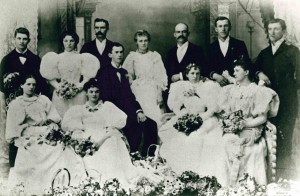
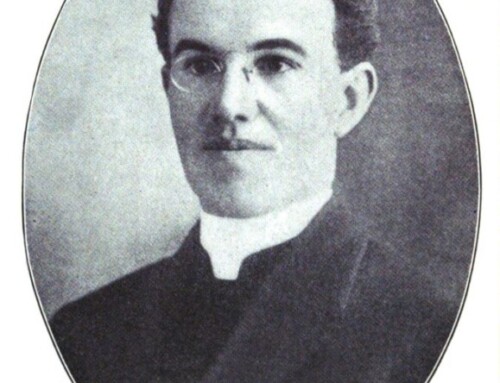
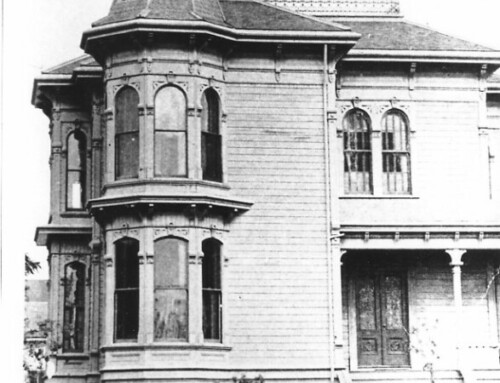
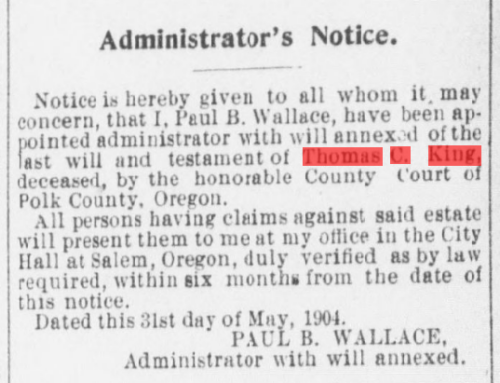
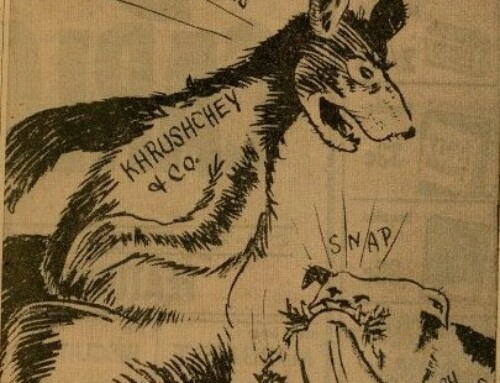
Leave A Comment